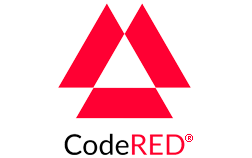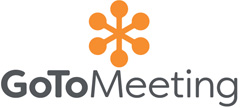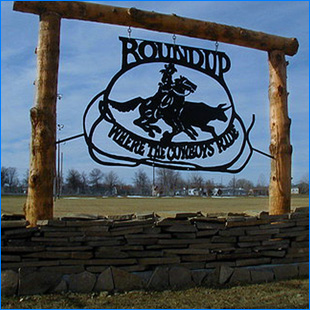Disaster & Emergency Services (DES)
 Musselshell County Disaster and Emergency Services (DES)
Musselshell County Disaster and Emergency Services (DES)
The Office of DES is responsible for maintaining an emergency services system which includes all four phases of emergency management: mitigation, preparedness, response, and recovery.
Contacts & Alerts
- 406-323-2777
- DES Fax 406-323-2367
- Darren Rook – Justin Russell
- Facebook County Alerts
- Twitter County Alerts
- County CodeRED
- Montana State DES
Location and Hours of Operation (DES and Rural Addressing Service)
DES: Monday – Friday 9:00 am to 4:00 pm.
Rural Addressing Service: Monday – Friday 8:00 am to 9:00am and 4:00pm to 5:00 pm by appointment only.
Hours subject to change with Disaster response and meeting schedule.
12 Main Street
Roundup, MT 59072
News & Alerts from the Musselshell County DES Facebook Page
Burn Permits
Apply Online for a County Burn Permit
Musselshell DES
The Musselshell County Office of Disaster and Emergency Services (DES) is the designated department for writing, reviewing, and maintaining an inter-jurisdictional plan and program. Specific plans would include, but not limited to, the Musselshell County Emergency Operation Plan, the Pre-Disaster Mitigation Plan, Community Wildland Protection plan,and the Emergency Operation Center (EOC) Plan. Along with Mutual Aid Agreements locally and with neighboring County jurisdictions as well as State and Federal entities.
- The Director prepares for, coordinates, and implements emergency and disaster functions (preparedness, response, recovery, and mitigation) to ensure continuity of government and operations, survival of the populace, and reduction of human suffering and property damage.
- Establishes, develops, and coordinates the county-wide DES program for emergency response
- Establishes and manages the EOC, informs and advises the Musselshell County Board of Commissioners and other entities responsible for Emergency Management.
- Conducts exercises and the testing of emergency plans and warning systems, provides public education and training programs, maintains shelters and radiological monitoring programs.
- Works alongside the Local Emergency Planning Committee (LEPC) in developing procedures for receiving and processing requests from regulated local facilities to provide public right-to-know notification of hazardous materials in accordance with Title III, SARA.
- Prepares and manages funding grants with reporting requirements to the Glacier County Commissioners and the State of Montana DES.
- Acts as liaison related to Local, State, and Federal Agencies, manages or acts as a media source through public information.
- Informs affected community of facts during emergency situations and initiates necessary documentation to declare emergencies and/or disasters upon commissioner and mayoral concurrence.
- Assists the legal subdivisions in Musselshell County with emergency response planning.
- Responds to hazardous material releases and significant emergency incidents within Musselshell County.
- The DES office also incorporates the Rural Addressing System, Fire Warden, and Flood Plain Administration position.
How You Can Help
When disaster strikes, people everywhere want to help those in need. To ensure that this compassion and generosity are put to good use, keep the following points in mind.
- Financial aid is an immediate need of disaster victims. Make financial contributions through a recognized voluntary organization or local bank to ensure that contributions are put to their intended use.
- Before donating food or clothing, wait for instructions from local officials. Immediately after a disaster, relief workers don’t usually have time or facilities to set up distribution channels, and too often these items go to waste.
- If you want to volunteer your time, go through a recognized agency such as the local CERT Team, American Red Cross, Salvation Army. They work with local emergency management personnel to determine what is needed and are prepared to deal with the need.
- Organizations and community groups wishing to donate items (when requested) should contact the local DES before donating any items. You will be told where things are to be delivered and what items are needed.
Preparedness Tips
Disasters happen anytime, anywhere. Whether it’s a hazardous material spill, wildfire, severe winter or summer storm or a natural hazard — such as a tornado, flood or earthquake — you may not have much time to respond. The effects of a disaster or emergency can vary widely. A hazardous material spill could require an instant evacuation. A winter storm could confine you to your home for several days. Natural disasters could cut off such basic services as gas, water, electricity and communications.
Following a disaster or emergency, local officials and relief workers will be on scene, but cannot reach everyone immediately. Help could reach you in hours or it may take days. Your best protection is to be proactive and be prepared to be self-sufficient for at least 72 hours.
The best disaster preparedness starts with personal protection and safety. An attitude of personal responsibility allows individuals, families and businesses to identify prioritize and mitigate issues that arise in disasters.
For information on being prepared or specific hazards please feel free to contact the DES office for additional information.
Useful Links:
National Weather Service
The National Weather Service is responsible for weather, water, climate forecasts, and warnings.
Skywarn Weather Spotter is a program run by the National Weather Service (NWS) which uses volunteer observers for reporting all types of hazardous weather. Originally introduced in the 1960’s in the Midwest as an early warning tornado detection system, the program is open to all people. The NWS, in conjunction with the Office of Disaster & Emergency Services, provides training each spring. For more information, check out Skywarn.
Sara Title III/Tier Reporting
Emergency Planning and Community Right-to-Know Act
On December 4, 1984, a cloud of extremely toxic methyl isocyanate escaped from a Union Carbide plant in Bhopal, India, killing over 2,500 people and injuring tens of thousand more. Several months later, a less toxic derivative of the same chemical was released from a chemical plant in West Virginia.
These two incidents gave rise to legislation passed in November, 1986 entitled the Emergency Planning and Community Right-to-Know Act or SARA Title III (Superfund Amendments and Reauthorization Act). The law was designed to help America’s communities deal safely and effectively with the many hazardous substances that are used throughout our society.
The Emergency Planning and Community Right-to-Know Act (EPCRA) gives citizens and response agencies the right to obtain information about hazardous chemicals in our community, to learn about possible risks to our community from these chemicals and to help plan how to protect our community in case of an emergency. The Act applies to all companies that use, make and store chemicals.
The Act sets forth reporting requirements for companies who use, make or store certain chemicals above specified reportable quantities. Information is reported to the local fire department, the Local Emergency Planning Committee (LEPC) and the State Emergency Response Commission (SERC). The LEPC uses this information to help develop an emergency response plan and must also make this information available to the public.
If you are interested in more information about the Emergency Planning and Community Right-to-Know Act or about what chemicals are being stored in your community, contact the Office of Disaster and Emergency Services at 406-323-2777.
Tier Reporting
If you are the owner/operator of a facility that stores, uses or produces chemicals or extremely hazardous substances in excess of specified amounts you may be responsible for the annual submission of Tier I or Tier II reports. Reports are due by March 1st of each year for the preceding year. If you are unsure whether you have a reporting responsibility, contact the DES Office for an EPA brochure entitled “Community Right-to-Know and Small Business”. Reporting forms and instructions are available below or from the DES office.
Emergency Alert System
The EAS committee have developed a plan to disseminate emergency information and warnings to the general public at the request of local, state and federal officials. The plan may be activated on a day to day basis in response to such emergencies as flooding, tornadoes, hazardous materials incidents and civil emergencies.
You may tune to any of the stations listed below for emergency public information.
NOAA Weather Radio: *Operational 24 hours a day
NOAA Weather radio provides continuous broadcasts of the latest weather information directly from the National Weather Service offices. Broadcasts are tailored to the weather information needs of those within the listening area.
Weather messages are repeated every five to seven minutes, and are routinely revised every one to three hours, or more frequently, as needed. The routine broadcast includes:
- The Billings area outlook
- Three to five day extended forecast
- Selected hourly weather reports from around the region.
Warnings, watches and advisories for conditions such as tornadoes, severe thunderstorms, high winds, floods and heavy snow are broadcast as necessary and may pre-empt regular programming.
NOAA Weather Radio has a unique feature which the National Weather Service uses in case of threatening severe weather, called the warning alarm. When warnings of threatening severe weather are issued, the warning alarm is activated directly from the broadcast facility. Weather radios receivers equipped with the alarm feature sound an alarm to alert you to the warning message. The warning alarm is activated for the following weather watches and warnings: WXL-27
- Tornado Watch/Warning
- Severe Thunderstorm Watch/Warning
- High Wind Warning
- Flood Warning
- Flash Flood Watch/Warning
- Winter Storm Warning
- Blizzard Warning
- Dam Failure
Tests of the NOAA Weather Radio Warning Alarm are conducted every Wednesday around noon, unless severe weather is threatening.
Transmitter Location / Frequency
- Ryegate / 162.450
- Billings / 162.550
- Winnett / 162.400
FEMA Flood Insurance
Since standard homeowners insurance doesn’t cover flooding, it’s important to have protection from the floods associated with heavy rains, snowfall, and other conditions that impact Pondera County.
In 1968, Congress created the National Flood Insurance Program (NFIP) to help provide a means for property owners to financially protect themselves. The NFIP offers flood insurance to homeowners, renters, and business owners if their community participates in the NFIP. Participating communities agree to adopt and enforce ordinances that meet or exceed FEMA requirements to reduce the risk of flooding.
Pre-Disaster Mitigation Plan
The effects from several natural and man-made hazards may directly impact the safety and wellbeing of residents of Musselshell County. Historically, Musselshell County residents have dealt with floods, high winds, severe summer storms (with damaging thunderstorms and hail), harsh winter storms (with extreme cold, wind, and blizzards), wildfires, drought, hazardous material incidents, and transportation accidents (highway). While most hazards cannot be eliminated, the effects from them can be mitigated.
Musselshell County completed a Pre-Disaster Mitigation (PDM) Plan in 2007, which was adopted in 2007, to help guide and focus hazard mitigation activities.
The purpose of the PDM Plan is to promote sound public policy designed to protect residents, critical facilities, infrastructure, private property, and the environment from natural and man-made hazards. The Musselshell County PDM Plan includes resources and information to assist residents, organizations, local government, and others interested in participating in planning for natural and manmade hazards.
To learn more about the Pre-Disaster Mitigation Plan for Musselshell County, contact the DES Office.
ICS FEMA Independent Study Program
The Incident Command System (ICS) is a standardized, on-scene, all-hazards incident management approach that allows for the integration of facilities, equipment, personnel, procedures, and communications operating within a common structure. It also enables a coordinated response among various jurisdictions and function agencies, and establishes common processes for planning and managing resources.
ICS is flexible and can be used for incidents of any type, scope, and complexity. ICS allows its users to adopt an integrated organizational structure to match the complexities and demands of single or multiple incidents.
The Emergency Management Institute (EMI) offers self-paced courses designed for people who have emergency management responsibilities and the general public. All are offered free-of-charge to those who qualify for enrollment.










